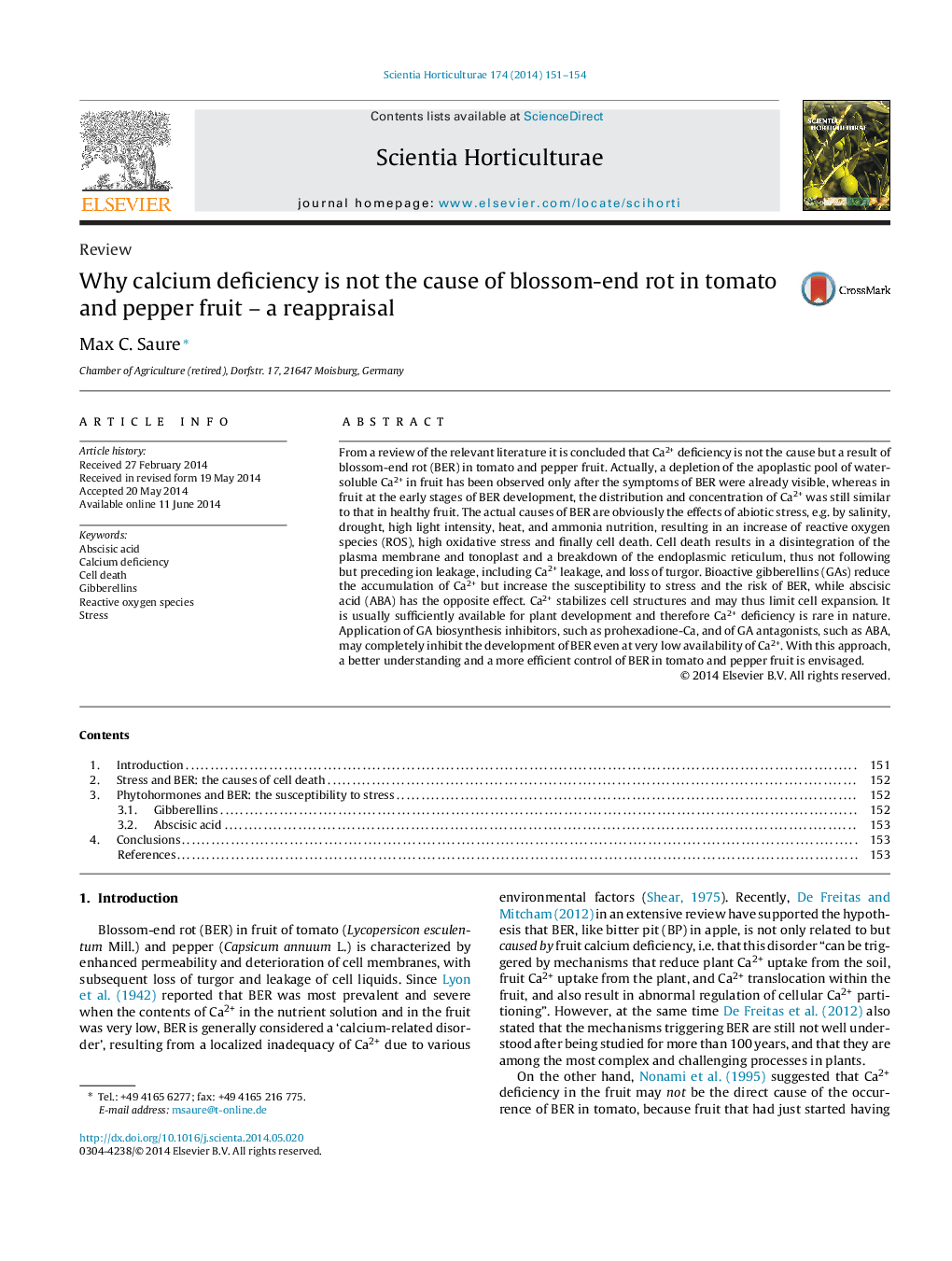| کد مقاله | کد نشریه | سال انتشار | مقاله انگلیسی | نسخه تمام متن |
|---|---|---|---|---|
| 4566720 | 1628824 | 2014 | 4 صفحه PDF | دانلود رایگان |
• Calcium deficiency is not the cause of BER but may result from BER.
• Stress triggers the occurrence of BER at increased susceptibility.
• The susceptibility to BER is increased by gibberellins, decreased by ABA.
From a review of the relevant literature it is concluded that Ca2+ deficiency is not the cause but a result of blossom-end rot (BER) in tomato and pepper fruit. Actually, a depletion of the apoplastic pool of water-soluble Ca2+ in fruit has been observed only after the symptoms of BER were already visible, whereas in fruit at the early stages of BER development, the distribution and concentration of Ca2+ was still similar to that in healthy fruit. The actual causes of BER are obviously the effects of abiotic stress, e.g. by salinity, drought, high light intensity, heat, and ammonia nutrition, resulting in an increase of reactive oxygen species (ROS), high oxidative stress and finally cell death. Cell death results in a disintegration of the plasma membrane and tonoplast and a breakdown of the endoplasmic reticulum, thus not following but preceding ion leakage, including Ca2+ leakage, and loss of turgor. Bioactive gibberellins (GAs) reduce the accumulation of Ca2+ but increase the susceptibility to stress and the risk of BER, while abscisic acid (ABA) has the opposite effect. Ca2+ stabilizes cell structures and may thus limit cell expansion. It is usually sufficiently available for plant development and therefore Ca2+ deficiency is rare in nature. Application of GA biosynthesis inhibitors, such as prohexadione-Ca, and of GA antagonists, such as ABA, may completely inhibit the development of BER even at very low availability of Ca2+. With this approach, a better understanding and a more efficient control of BER in tomato and pepper fruit is envisaged.
Journal: Scientia Horticulturae - Volume 174, 22 July 2014, Pages 151–154
